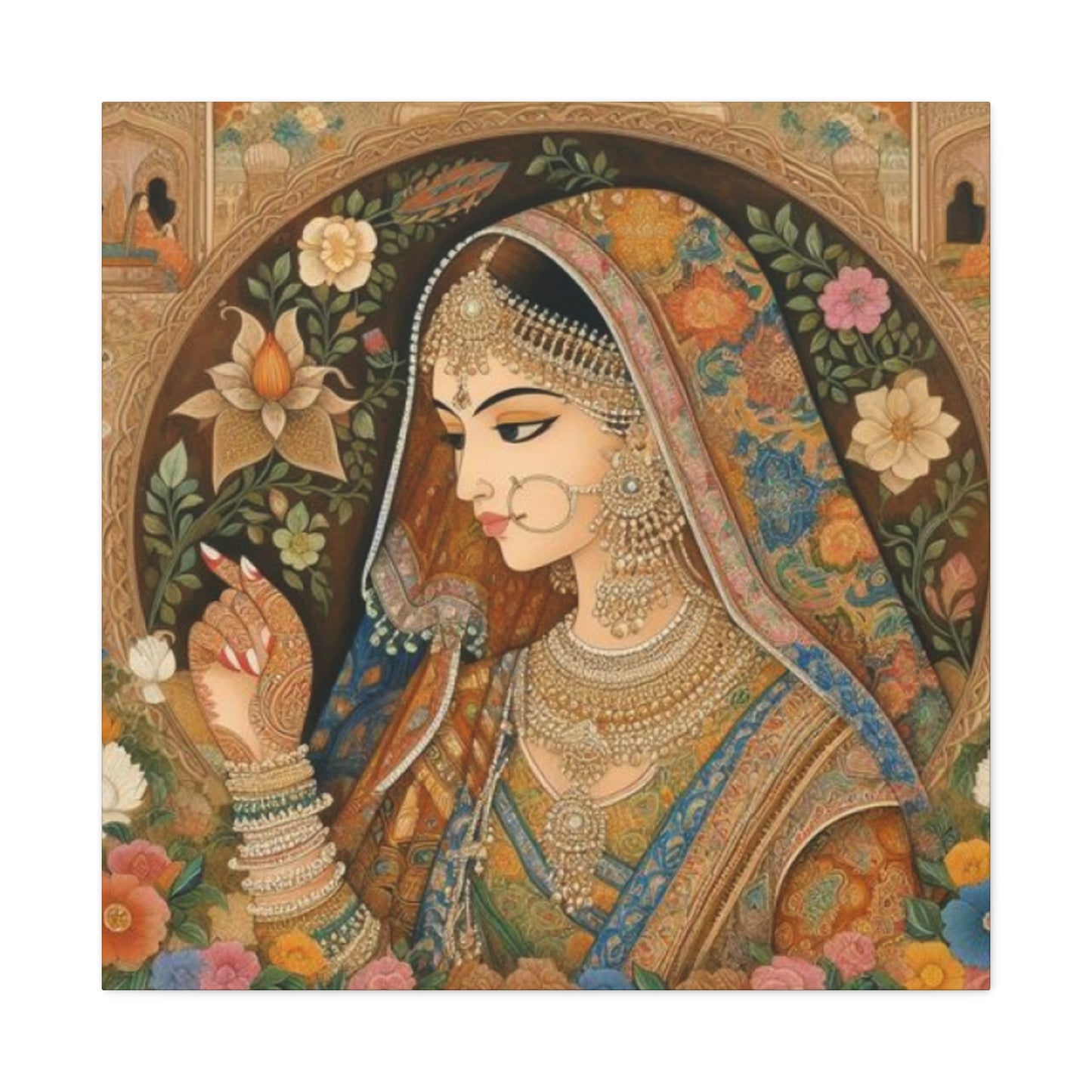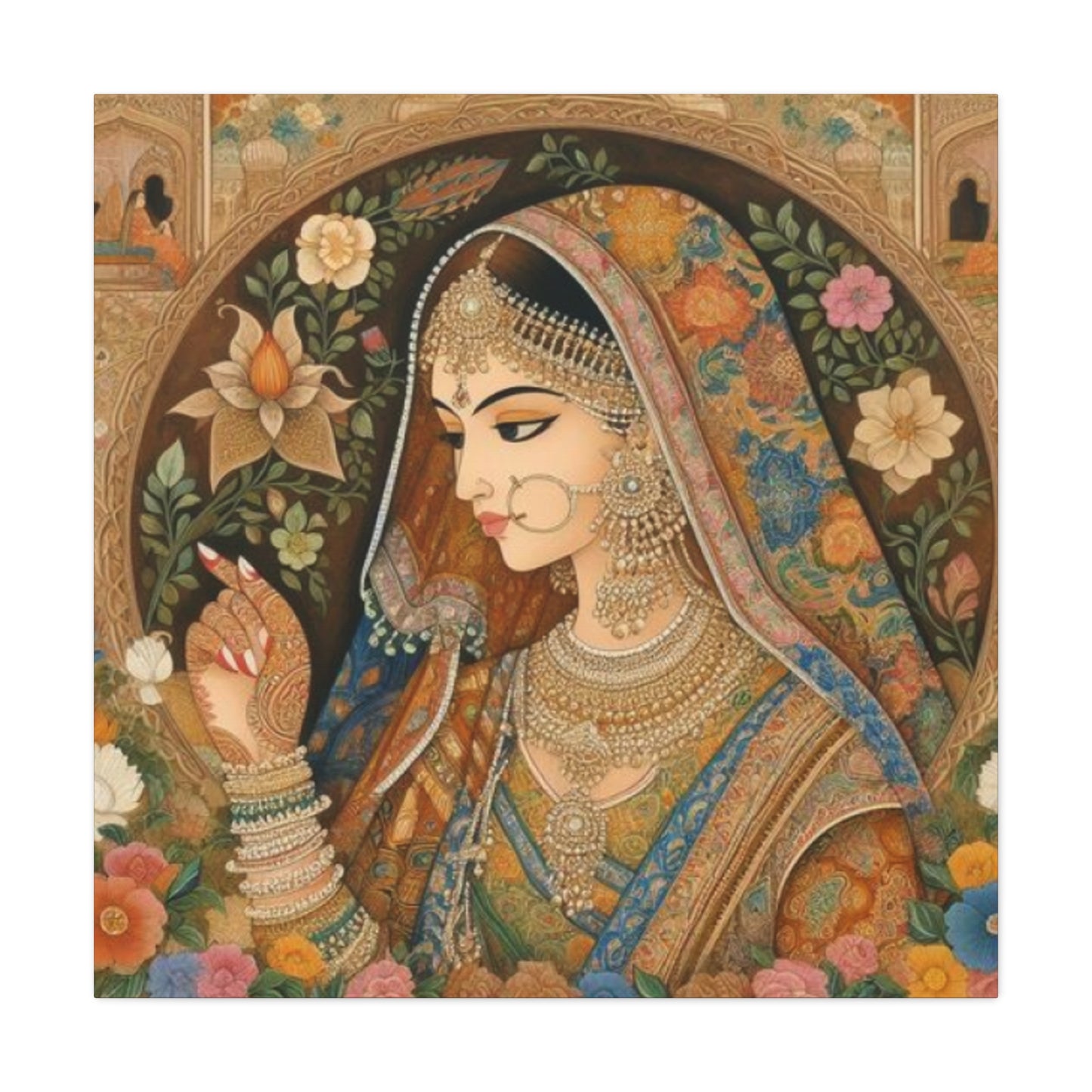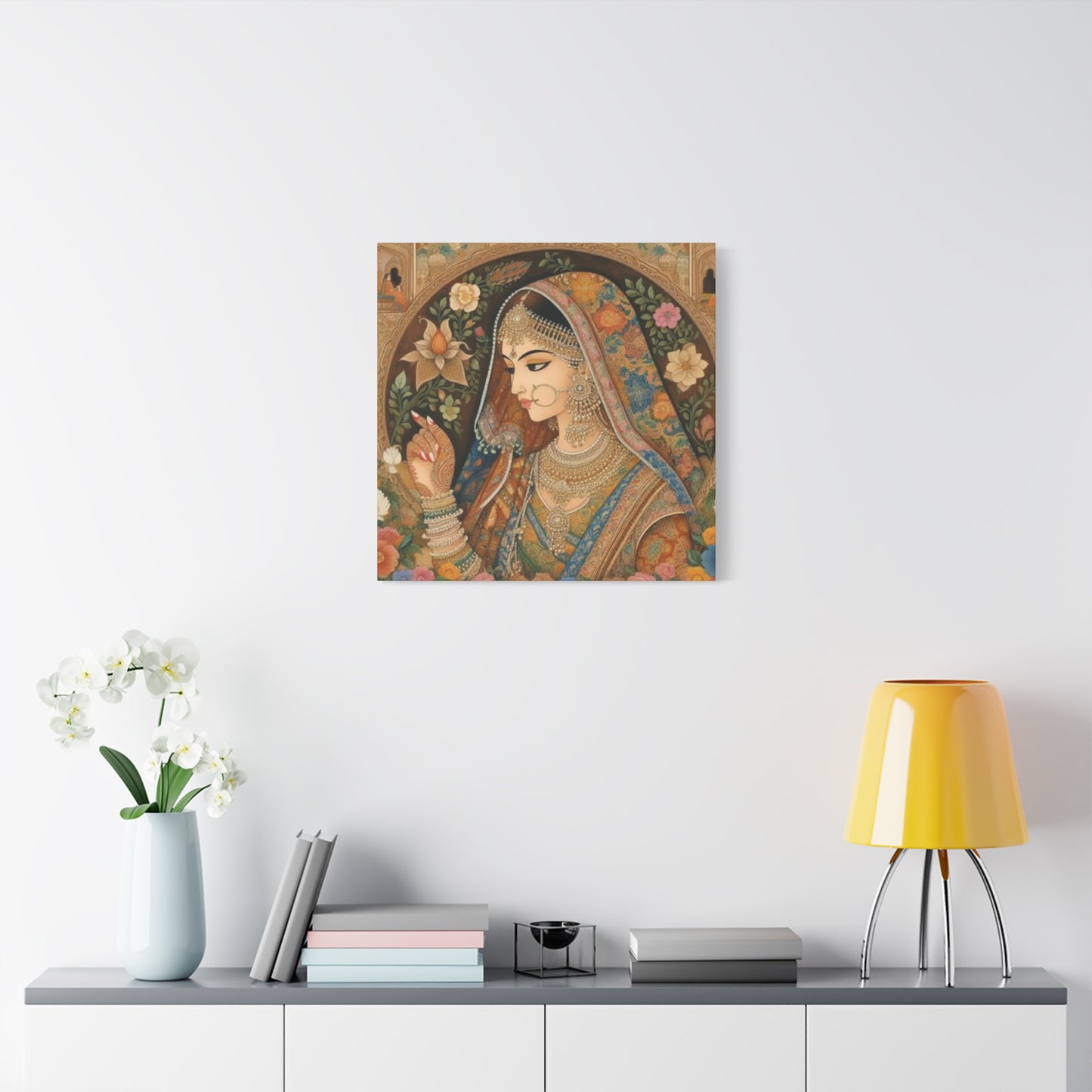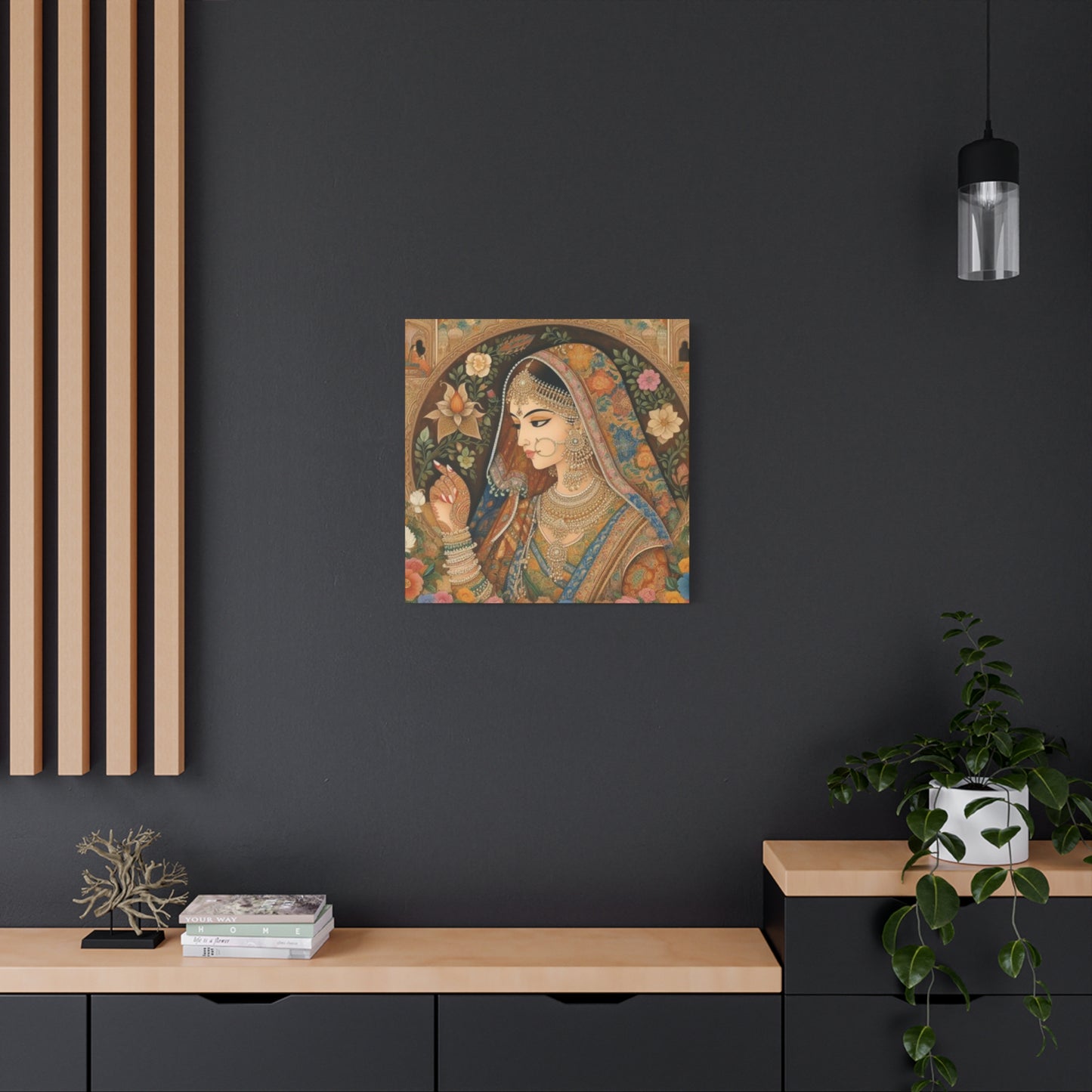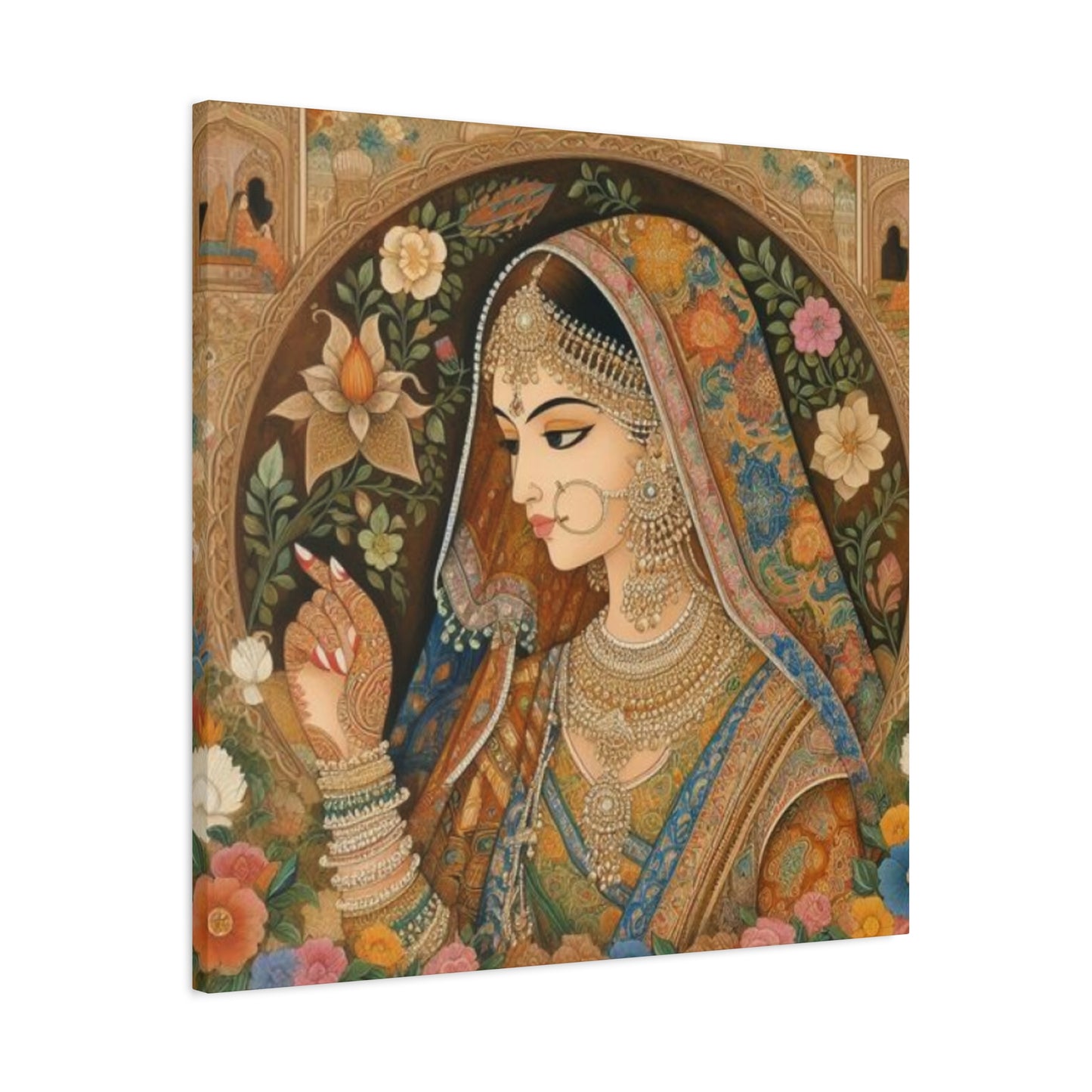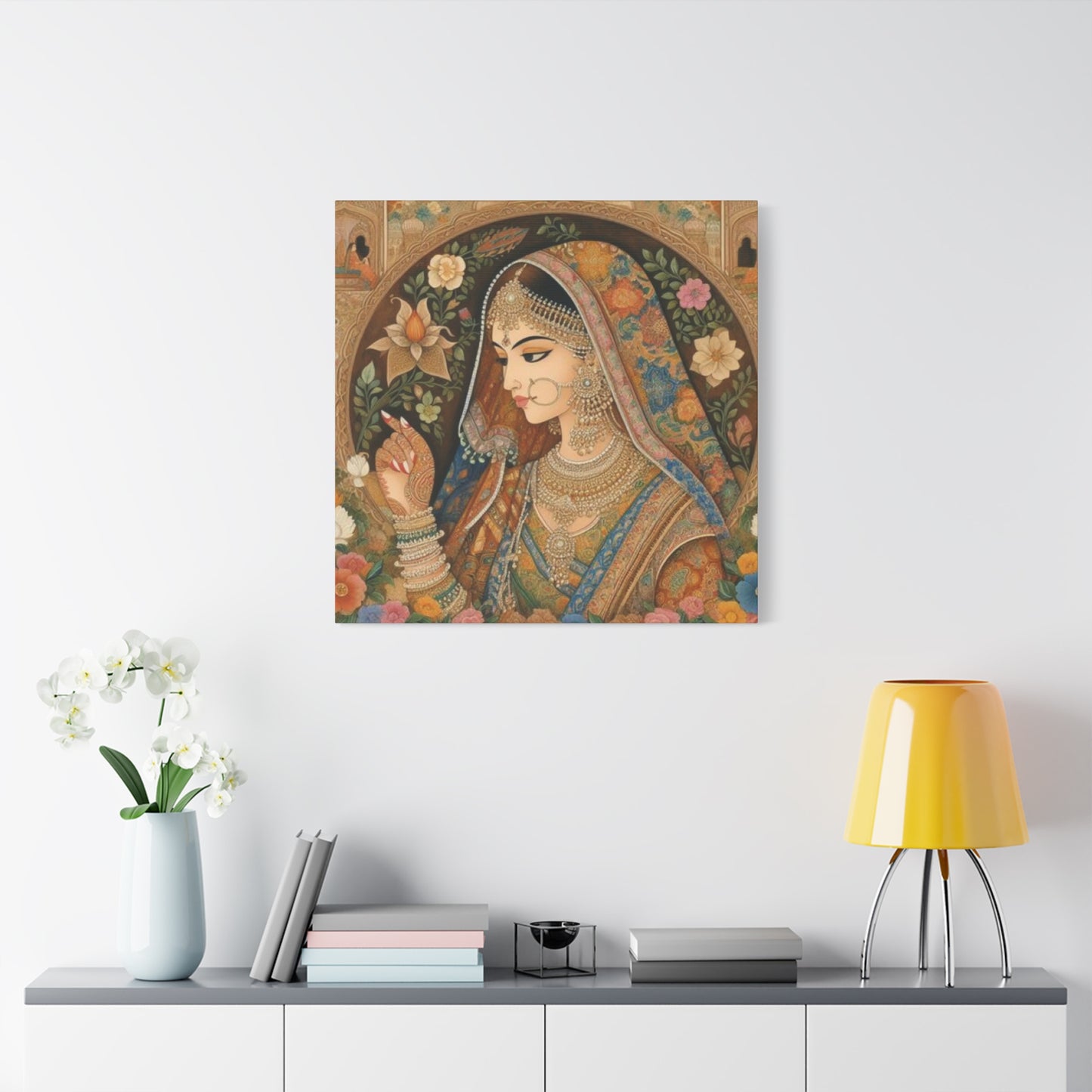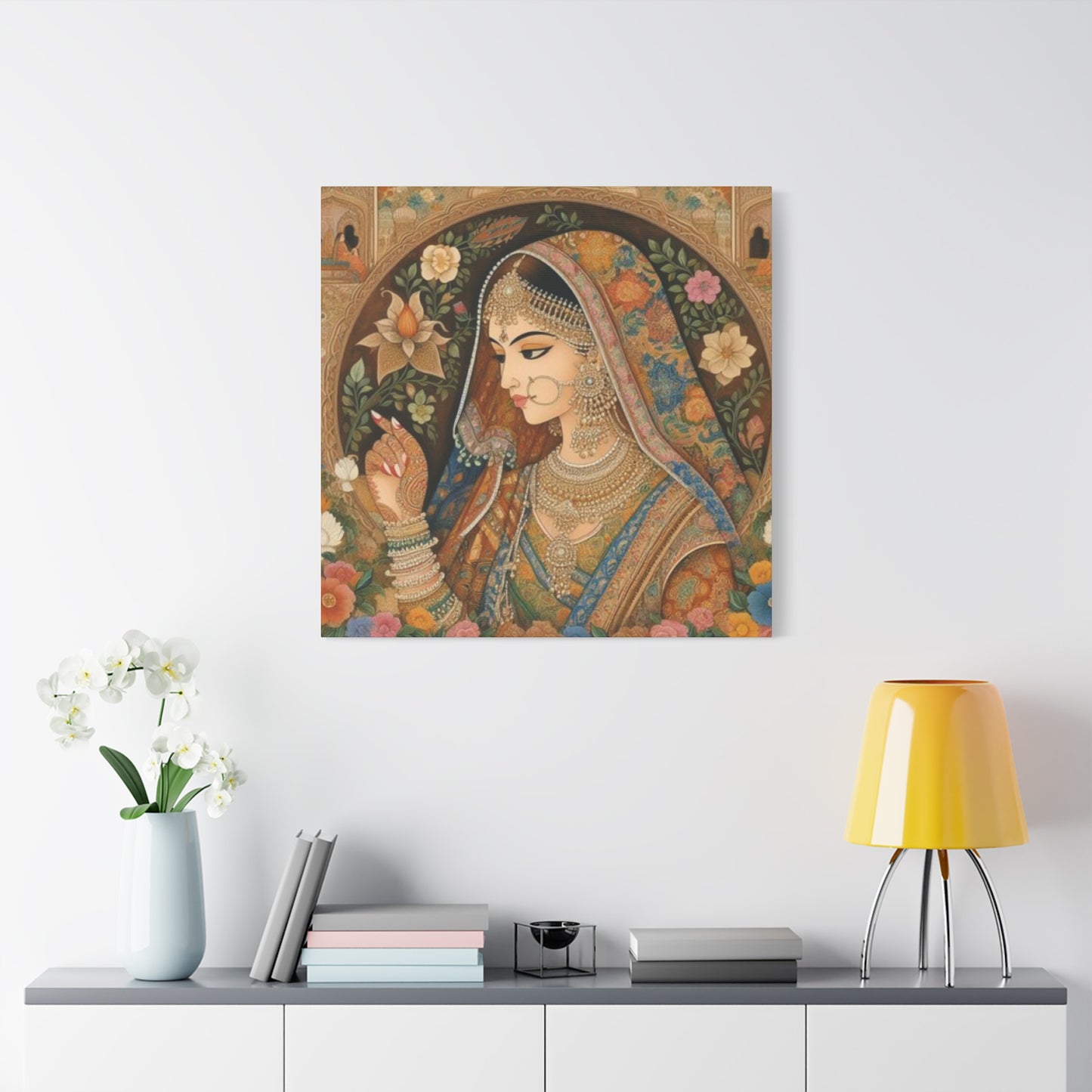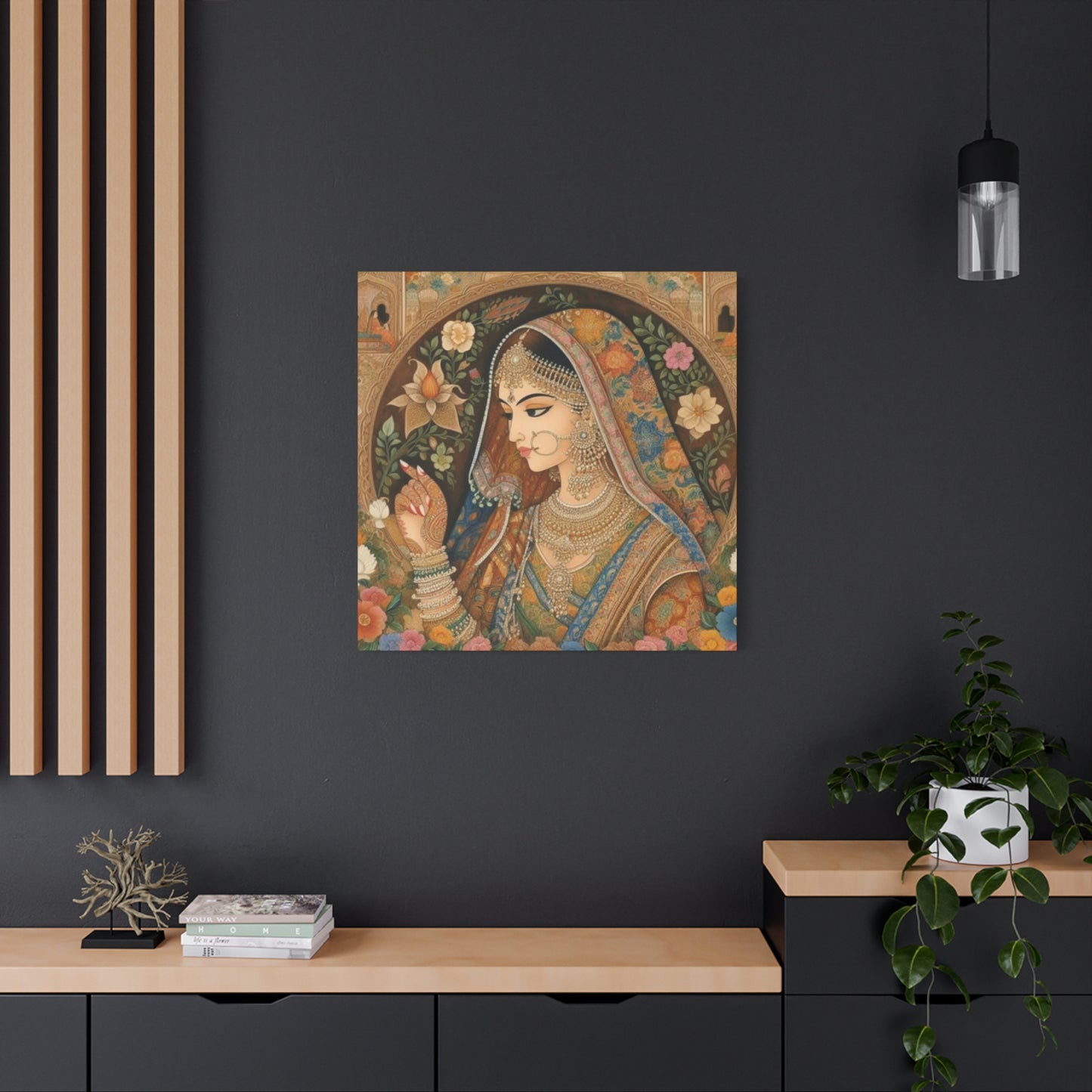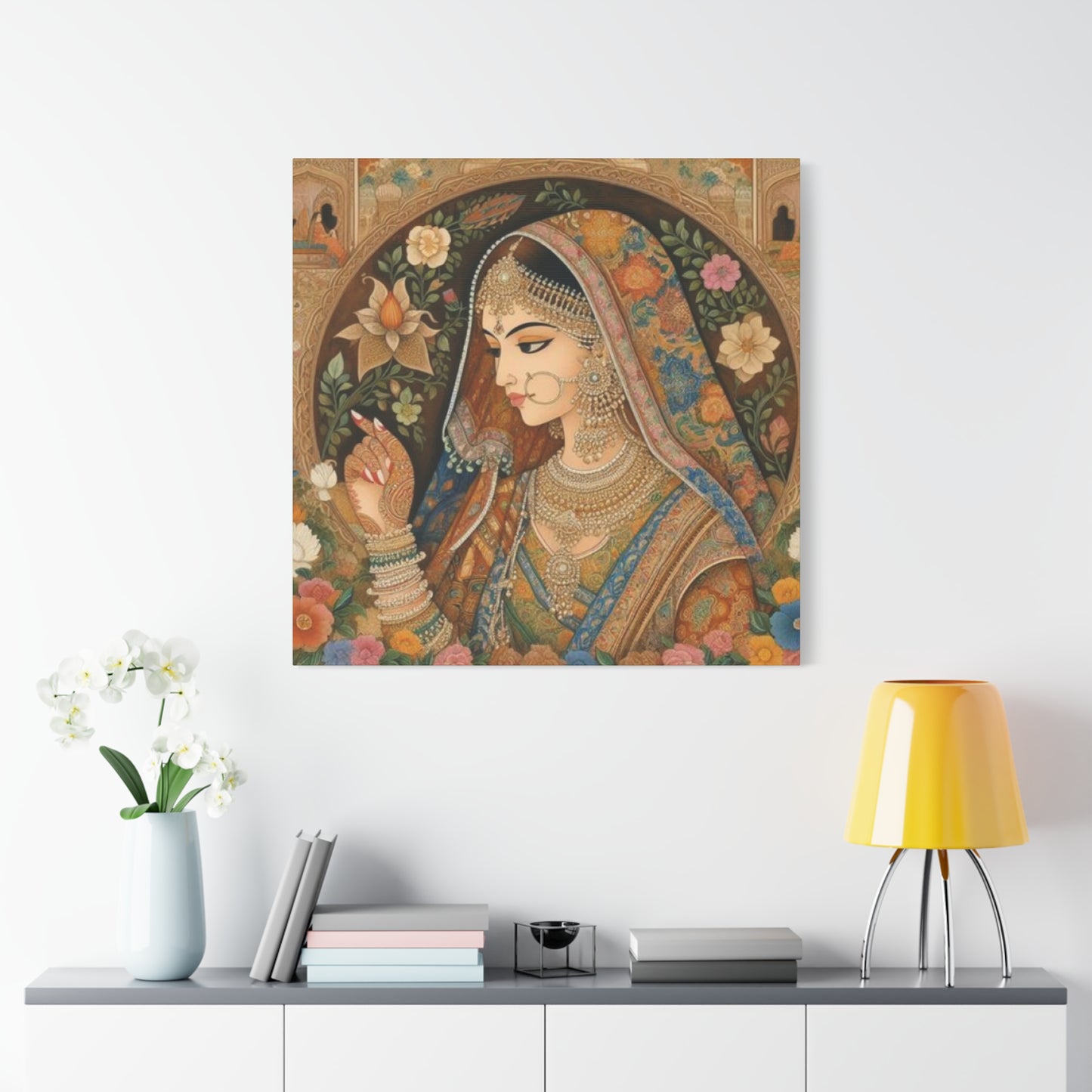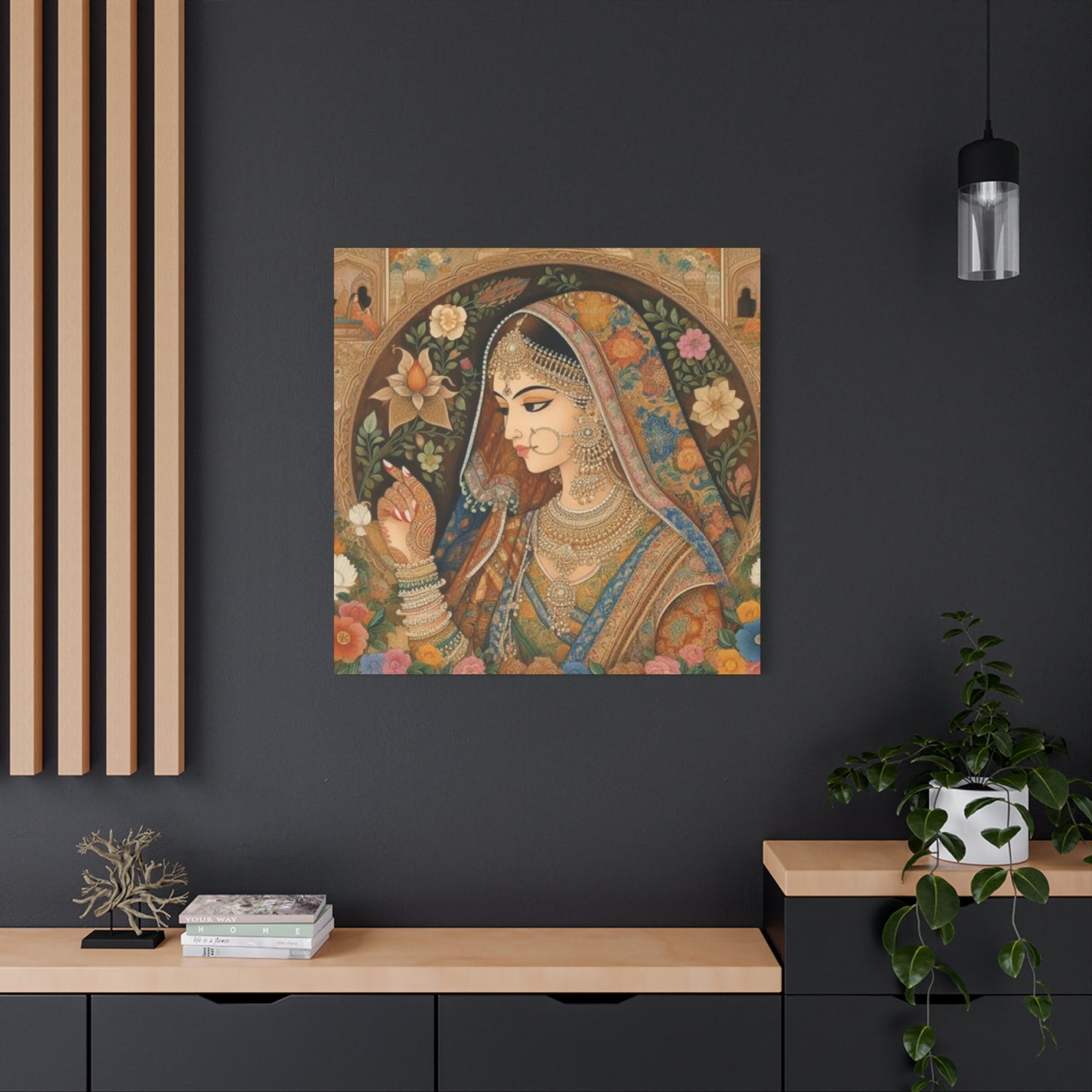Indian Queen Wall Art in Different Art Forms: Paintings, Digital Prints & Murals
The world of decorative artwork has witnessed a remarkable surge in appreciation for culturally rich imagery, particularly pieces that celebrate the grandeur of historic royal figures. Among these treasured artistic expressions, representations of royal women from the Indian subcontinent stand out as captivating choices for contemporary interior spaces. These magnificent portrayals combine historical significance with aesthetic brilliance, offering homeowners and decorators an opportunity to infuse their environments with elegance, cultural depth, and timeless beauty.
The fascination with royalty-themed artwork extends beyond mere decoration. These pieces serve as visual narratives that connect modern living spaces with centuries of tradition, power, and feminine grace. When displayed on walls, such imagery transforms ordinary rooms into galleries of cultural appreciation, sparking conversations and creating focal points that command attention while maintaining sophistication.
Royal Women in Artistic Traditions
Throughout centuries of artistic evolution across the Indian subcontinent, royal women have occupied prominent positions in visual narratives. These figures represented not merely aesthetic subjects but embodied political power, cultural refinement, and social influence. Artists across different periods captured these personalities with meticulous attention to detail, documenting their attire, jewelry, posture, and surrounding environments with reverence and precision.
The tradition of portraying nobility in artistic form spans multiple millennia, deeply embedded in diverse cultural landscapes. From ancient fresco work in cave temples to elaborate miniature paintings developed during various dynastic periods, the representation of aristocratic women evolved alongside artistic techniques and cultural influences. Each era brought distinct stylistic approaches, influenced by prevailing dynasties and regional aesthetic sensibilities.
Early examples of royal portraiture can be traced to ancient wall paintings that decorated sacred spaces, depicting court scenes and assemblies where noble figures participated in important ceremonies. As artistic traditions matured, the portrayal of royal women became increasingly sophisticated. The development of miniature painting traditions marked significant transformations in how these subjects were represented, introducing new levels of detail and symbolic richness.
Different regions developed characteristic approaches to depicting royalty. Some traditions emphasized realism and individual features, while others favored idealized representations that highlighted symbolic attributes. The clothing, ornaments, and settings depicted in these works provided valuable insights into court life, fashion trends, and social hierarchies of their respective periods.
Artists working for royal patrons developed specialized skills in capturing the dignity and grace expected in portraits of nobility. These craftsmen understood the importance of visual symbols, incorporating elements that communicated status, virtue, and divine favor. The backgrounds, architectural elements, and decorative motifs included in such works often carried significant meaning, contributing to the overall narrative.
Artistic Styles and Regional Variations in Royal Portraiture
The vast geographical and cultural diversity of the Indian subcontinent resulted in numerous distinct artistic traditions, each approaching the representation of royal figures with unique characteristics. Understanding these regional variations enhances appreciation for the richness available in contemporary canvas reproductions.
Miniature painting traditions developed in various court centers produced some of the most exquisite representations of royal women. These small-scale works demonstrated extraordinary precision, with artists creating intricate details in spaces measuring just a few inches. The delicate brushwork captured elaborate textile patterns, jewelry designs, and facial expressions with remarkable clarity.
Courtly traditions emphasized particular aesthetic qualities. Some schools favored bold, vibrant color palettes with strong contrasts, while others preferred subtle tonal variations and muted harmonies. The treatment of backgrounds varied significantly, from simple solid colors to elaborate architectural settings or natural landscapes.
Portrait traditions in different kingdoms reflected varying influences from indigenous styles and external cultural contacts. Some artistic centers maintained conservative approaches rooted in ancient practices, while others eagerly incorporated new techniques and aesthetic concepts from interactions with foreign visitors and traders.
The representation of royal women often included symbolic elements that communicated specific qualities or narratives. Certain flowers, animals, or objects placed within compositions carried conventional meanings that educated viewers would recognize. The positioning of hands, direction of gaze, and selection of jewelry all contributed to the intended message.
Regional painting traditions developed characteristic color preferences. Some schools favored rich golds, deep reds, and royal blues, while others emphasized earth tones or bright, cheerful palettes. The preparation of pigments and application techniques varied, resulting in distinctive visual textures and surface qualities.
Symbolic Elements in Royal Feminine Imagery
Artwork depicting royal women from historical periods incorporated numerous symbolic components that enriched their meaning beyond simple portraiture. Modern canvas reproductions preserve these traditional elements, allowing contemporary viewers to appreciate the layered significance embedded in these images.
Jewelry played crucial roles in visual narratives of nobility. The types, quantities, and styles of ornaments depicted communicated information about status, wealth, and cultural identity. Elaborate necklaces, earrings, armlets, and headpieces were not merely decorative additions but essential components of royal imagery that signaled position within social hierarchies.
Textile representations in these works demonstrated remarkable attention to pattern and texture. Artists meticulously rendered the intricate designs woven or embroidered into garments, capturing the luxury and craftsmanship associated with royal wardrobes. The draping of fabric, color combinations, and decorative borders all contributed to the overall impact of the composition.
Architectural settings frequently appeared in the backgrounds of royal portraits, situating subjects within palace environments that emphasized their elevated status. Carved pillars, ornate screens, decorated archways, and glimpses of formal gardens created contexts that reinforced the nobility of the figures depicted.
Animal symbolism appeared in many compositions. Certain creatures carried associations with particular qualities such as strength, wisdom, or divine favor. The inclusion of these animals, whether as small details or prominent elements, added layers of meaning that original audiences would have immediately understood.
Floral motifs served both decorative and symbolic functions. Specific blooms held cultural significance, representing concepts like purity, beauty, or spiritual enlightenment. The positioning and rendering of botanical elements contributed to the aesthetic harmony while enriching the narrative content.
Contemporary Applications in Interior Design
Modern interior design increasingly embraces culturally significant artwork as a means of creating distinctive, personalized spaces. Canvas reproductions of royal imagery from historical traditions offer particular advantages for contemporary decorative schemes, combining visual impact with cultural sophistication.
These pieces function effectively as focal points in various room settings. Large-format canvases command attention when positioned above seating areas, creating dramatic centerpieces that anchor entire design schemes. The inherent majesty of royal subjects naturally draws the eye, establishing hierarchy within visual compositions.
Color coordination represents an important consideration when integrating such artwork into existing palettes. Many traditional royal portraits feature rich, saturated hues that can either complement or provide striking contrast to room colors. The warm tones frequently found in these works pair beautifully with neutral backgrounds, while the jewel tones can energize spaces dominated by cooler colors.
Scale plays a critical role in successful placement. Oversized canvases create bold statements suitable for spacious walls in living areas or formal dining rooms. Medium-sized pieces work well in intimate settings like studies or bedrooms. Smaller formats allow for creative arrangements in gallery walls or unexpected locations like hallways and entryways.
Lighting considerations significantly impact how these artworks appear in actual settings. Proper illumination enhances the depth and detail of canvas prints, revealing subtle color variations and textural qualities. Positioning pieces to avoid glare while ensuring adequate light brings out the best qualities of the imagery.
Frame selection influences the overall aesthetic integration. Simple, clean-lined frames allow the artwork itself to dominate, while more ornate framing can enhance the traditional character of historical subjects. The choice between framed and gallery-wrapped canvas presentations depends on desired style outcomes and existing room aesthetics.
Cultural Appreciation and Educational Value
Displaying artwork depicting royal women from historical traditions offers opportunities for cultural education and appreciation that extend beyond purely decorative functions. These pieces serve as conversation starters that can introduce guests to rich artistic heritages and historical narratives.The visual splendor of such works naturally prompts questions and comments from viewers, creating openings for sharing information about the cultural contexts, artistic traditions, and historical periods represented. This educational dimension adds depth to the decorative choice, transforming walls into teaching tools.
Understanding the symbolism embedded in traditional royal imagery enhances appreciation for both the original artworks and their modern reproductions. Learning to recognize conventional elements like specific jewelry types, textile patterns, or architectural details develops visual literacy and cultural awareness.These pieces can inspire interest in broader cultural exploration. Viewers intrigued by the artwork may seek out additional information about historical periods, artistic movements, or cultural practices represented.
This curiosity-driven learning represents one of the valuable contributions that culturally significant art makes to living environments.For families seeking to maintain connections with cultural heritage, displaying such artwork creates visual links to ancestral traditions. Children growing up surrounded by these images develop familiarity with cultural symbols and aesthetic traditions, fostering identity formation and cultural pride.The presence of diverse artistic traditions in living spaces promotes values of cultural appreciation and respect for different heritages. In increasingly multicultural societies, displaying artwork from various traditions demonstrates openness and curiosity about the wider world.
Quality Considerations in Canvas Reproductions
The market for canvas artwork offers varying quality levels, making informed selection important for obtaining pieces that will maintain their appeal over time. Understanding quality factors helps buyers make choices that deliver lasting satisfaction and value.Printing technology significantly impacts reproduction quality. Advanced digital printing methods can capture the subtle color gradations, fine details, and textural qualities of original artworks with remarkable fidelity. High-resolution processes ensure that even intricate elements like jewelry details or textile patterns appear crisp and clear.
Canvas material quality affects both appearance and durability. Premium cotton canvases provide superior surfaces for printing, accepting inks evenly and maintaining color vibrancy. The weight and weave of the canvas contribute to the overall impression of quality and professional production.Ink formulations determine color permanence and resistance to fading. Archival-quality inks maintain their brilliance over extended periods, even when exposed to ambient light. Inferior inks may show noticeable color shifts or fading relatively quickly, diminishing the artwork's impact.
Stretching and mounting techniques influence how canvas prints present when hung. Properly stretched canvases maintain taut, smooth surfaces without wrinkles or sags. The depth of the stretcher bars affects the dimensional presence of the piece, with deeper profiles creating more substantial, gallery-like presentations.Coating applications protect printed surfaces from environmental factors like dust, moisture, and minor abrasions. Quality protective coatings enhance color depth while providing practical preservation benefits without creating glossy reflections that might interfere with viewing.
Styling Approaches for Different Interior Aesthetics
Canvas artwork featuring royal imagery adapts successfully to various decorating styles, from traditional to contemporary approaches. Understanding how to integrate these pieces into different aesthetic frameworks maximizes their impact.Traditional interiors naturally accommodate historical royal imagery. Rich wood furnishings, formal arrangements, and classic color schemes create harmonious settings where such artwork feels perfectly at home. Pairing these pieces with traditional accessories and architectural details reinforces period character.
Contemporary spaces benefit from the contrast between sleek, minimal design elements and the ornate detail of historical royal portraits. This juxtaposition creates visual interest and prevents modern rooms from feeling stark or cold. The cultural richness of the artwork adds warmth and personality to clean-lined contemporary settings.Eclectic decorating approaches embrace mixing elements from different styles and periods. Royal canvas art fits naturally into such schemes, contributing historical depth to collections that might include modern abstract works, vintage photography, or other diverse pieces. The key lies in creating balanced arrangements that feel intentional rather than random.
Bohemian or globally-inspired interiors particularly suit culturally rich artwork. These decorating styles celebrate diverse influences and often incorporate textiles, artifacts, and imagery from various traditions. Royal portraits complement the layered, collected aesthetic characteristic of bohemian design.Transitional styles that blend traditional and contemporary elements find perfect balance with historical royal imagery presented in clean, modern frames or gallery wraps. This approach honors the cultural significance of the subject matter while presenting it in ways that feel current and relevant.
Creating Gallery Wall Arrangements
Incorporating royal canvas artwork into gallery wall displays allows for creative expression while showcasing multiple pieces cohesively. Thoughtful arrangement strategies create visually pleasing compositions that enhance overall room design.Symmetrical arrangements provide formal, balanced appearances suitable for traditional spaces. Centering a large royal portrait with smaller complementary pieces flanking it creates classic composition. Maintaining consistent spacing and alignment reinforces the orderly character.
Asymmetrical layouts offer more dynamic, contemporary feels. Varying sizes and placements create visual movement while maintaining overall balance through thoughtful distribution of visual weight. Larger pieces might anchor corners while smaller works fill gaps, creating cohesive yet informal arrangements.Thematic groupings tell visual stories by assembling related images. Multiple portraits showing different royal figures, various representations of similar subjects, or pieces sharing common color palettes create unified presentations that reward closer examination.
Linear arrangements work effectively in hallways or above long furniture pieces. Hanging multiple canvases in horizontal rows creates rhythm and guides the eye along walls. Maintaining consistent heights or bottom edges provides unity despite varied image content.Grid layouts offer clean, organized appearances. Arranging equal-sized canvases in precise rows and columns creates strong geometric impact. This approach suits modern aesthetics and works particularly well with standardized frame styles.
Preservation and Maintenance of Canvas Artwork
Proper care ensures that canvas reproductions maintain their visual appeal over many years. Understanding basic preservation principles helps protect investments in quality artwork.Placement away from direct sunlight prevents premature fading of printed colors. While quality inks resist UV damage better than inferior products, prolonged exposure to intense sunlight gradually affects even the best materials. Positioning artwork on walls that don't receive direct sun extends their lifespan significantly.
Humidity control matters for canvas preservation. Excessive moisture can lead to canvas relaxation or mold growth, while extremely dry conditions may cause materials to become brittle. Maintaining moderate humidity levels through climate control or dehumidifiers protects artwork integrity.Regular dusting with soft, dry cloths removes accumulating particles that can dull surface appearance over time. Gentle cleaning avoids pressing dust particles into canvas weave or damaging protective coatings. Avoiding liquid cleaners prevents moisture damage and color disturbances.
Proper hanging hardware selection ensures secure mounting that prevents accidents. Canvas pieces can be surprisingly heavy, especially larger formats. Using appropriate hangers rated for the weight prevents falls that could damage both artwork and walls.Periodic inspection allows early detection of potential problems like loosening of canvas tension, frame damage, or unusual surface changes. Addressing minor issues promptly prevents them from developing into serious problems requiring professional intervention.
Sizing Guidelines for Different Spaces
Selecting appropriately sized canvas artwork significantly impacts how effectively pieces function within their intended locations. General guidelines help match dimensions to room characteristics for optimal visual results.Living rooms typically accommodate larger canvases that make bold statements. Pieces measuring 36 by 48 inches or larger work well above sofas or as standalone focal points on prominent walls. These substantial sizes command attention without overwhelming spaces, provided room dimensions are adequate.
Bedrooms often benefit from medium to large canvases positioned above headboards or on facing walls. Dimensions between 24 by 36 inches and 40 by 60 inches create presence without dominating intimate spaces. The scale should feel substantial enough to anchor the room while maintaining comfortable proportions.Dining areas suit canvases that complement without competing with table settings and gatherings. Medium-sized pieces in the 30 by 40 inch range often prove ideal, providing visual interest that enhances meals without distracting from social interactions.
Home offices and studies work well with smaller to medium canvases that contribute personality without overwhelming functional spaces. Pieces ranging from 18 by 24 inches to 30 by 40 inches add sophistication while leaving wall space for other necessary items like shelving or task lighting.Entryways and hallways accommodate various sizes depending on available wall space. Narrow corridors suit vertical orientations, while more spacious foyers can handle impressive large-format pieces that create immediate impact as guests enter homes.
Pairing with Complementary Decorative Elements
Royal canvas artwork gains enhanced impact when thoughtfully coordinated with other decorative elements in the same spaces. Strategic pairing creates cohesive design narratives that feel intentional and polished.Textile selections offer opportunities to echo colors from canvas artwork. Throw pillows, curtains, or area rugs incorporating similar hues create visual connections that unify room elements. These color bridges help artwork feel integrated rather than applied as an afterthought.
Metallic accents found in many royal portraits can be reflected in decorative objects like lamps, frames, or accessories. Gold or bronze tones in artwork might be complemented by brass candlesticks, picture frames, or hardware finishes, creating sophisticated repetition that feels deliberate.Furniture styles influence how well artwork integrates. Traditional wooden pieces with carved details harmonize naturally with historical royal imagery. Contemporary furniture can create interesting contrast, but maintaining some connecting elements prevents the combination from feeling disconnected.
Lighting fixtures contribute significantly to the overall atmosphere. Ornate chandeliers or traditional sconces complement the formal elegance of royal portraiture, while modern track lighting or minimalist fixtures create contemporary contrast that can feel fresh and exciting.Decorative objects like sculptures, vases, or books can reinforce cultural themes introduced by artwork. Grouping complementary pieces on nearby surfaces creates layered visual stories that reward attention and demonstrate thoughtful curation.
Customization Options and Personalization
Modern production methods allow for various customization options that enable buyers to obtain canvas artwork perfectly suited to their specific needs and preferences. Understanding available choices helps maximize satisfaction with purchases.Size customization accommodates unique wall dimensions or specific design requirements. Many providers offer made-to-order canvas prints in custom dimensions, ensuring perfect fit for designated spaces. This flexibility eliminates common challenges of finding ready-made pieces in ideal sizes.
Frame style selection allows buyers to match artwork presentation to existing decor or personal aesthetic preferences. Options typically include various wood finishes, metal frames, or frameless gallery wrap presentations. Frame choice significantly impacts how artwork appears in actual settings.Canvas depth variation affects dimensional presence. Standard depths typically range from three-quarters of an inch to two inches or more. Deeper profiles create more substantial, sculpture-like objects that project further from walls, adding dramatic presence.
Finish options influence surface appearance and practical characteristics. Matte finishes minimize reflections and provide traditional looks, while satin or semi-gloss surfaces enhance color depth and offer easier cleaning. The choice depends on lighting conditions and personal preferences.Color adjustment services allow subtle modifications to better suit specific color schemes. Some providers offer options to enhance certain tones, adjust saturation levels, or create variations that better coordinate with particular palettes while maintaining artistic integrity.
Room-Specific Recommendations and Applications
Different rooms within homes serve distinct functions and create varied atmospheres, influencing optimal artwork selections. Tailoring choices to specific spaces maximizes both functional appropriateness and aesthetic impact.Living room placements typically emphasize social engagement and general relaxation. Royal canvas artwork creates sophisticated focal points that stimulate conversation while providing visual interest during everyday use. Pieces positioned above seating or on prominent walls serve as natural gathering points.
Master bedroom selections might favor calming compositions that promote relaxation while maintaining elegance. Royal imagery with softer color palettes and serene expressions creates restful environments. Positioning above headboards provides natural focal points visible from multiple room perspectives.Formal dining areas benefit from artwork that enhances special occasion atmospheres. Portraits conveying grandeur and celebration complement the elevated nature of dining experiences. The artwork contributes to memorable settings for family gatherings and entertaining guests.
Home office environments gain from artwork that inspires while maintaining professional character. Royal imagery suggesting wisdom, strength, or cultural refinement creates aspirational backdrops for productive work. Pieces should command respect without becoming distracting during focused tasks.Library or study spaces suit artwork that reinforces scholarly pursuits and cultural appreciation. Historical royal portraits contribute gravitas and connection to traditions of learning and patronage. These settings allow for deeper engagement with artistic and historical content.
Cultural Context and Historical Background
Appreciating royal canvas artwork involves understanding the cultural contexts and historical circumstances that shaped original creations. This knowledge enriches the viewing experience and informs thoughtful display choices.Dynastic periods produced distinctive artistic styles reflecting political structures and cultural values. Each ruling family or kingdom maintained particular aesthetic preferences and patronage patterns that influenced artistic output. Understanding these connections helps recognize stylistic characteristics.
Court culture shaped artistic subject matter and representational conventions. Artists working for royal patrons operated within established traditions dictating appropriate depictions of nobility. These conventions included specific poses, attributes, and symbolic elements considered suitable for portraying elevated social ranks.Religious and philosophical influences permeated royal portraiture. Many traditions incorporated spiritual symbolism alongside representations of temporal power, reflecting beliefs about divine sanction for rulers. Understanding these spiritual dimensions adds depth to interpretation.
Gender roles and expectations influenced how royal women were depicted. Artistic representations often emphasized qualities considered ideal for noble women, including beauty, virtue, modesty, and dignity. These portrayals reflected and reinforced cultural values regarding femininity and social position.Technological developments affected artistic possibilities. The introduction of new pigments, improved paper quality, and refined painting techniques allowed artists to achieve effects impossible in earlier periods. These innovations contributed to the evolution of representational styles.
Contemporary Artistic Interpretations
Modern artists continue engaging with themes of royal imagery, creating contemporary interpretations that dialogue with historical traditions while incorporating current sensibilities. These new works expand possibilities for those seeking canvas artwork combining cultural references with modern aesthetics.Fusion approaches blend traditional iconography with contemporary techniques. Artists might maintain classical composition structures while employing bold color choices or abstract elements foreign to historical styles. These hybrids appeal to viewers seeking connections between past and present.
Minimalist interpretations reduce complex traditional imagery to essential elements. Simplified compositions retain recognizable royal attributes while adopting clean, modern aesthetics. These pieces bridge historical subjects and contemporary design preferences.Pop art influences appear in works that appropriate royal imagery while applying bright colors, graphic treatments, or repetition characteristic of that movement. These playful reinterpretations make historical subjects accessible to contemporary audiences through familiar visual languages.
Mixed media approaches incorporate textures, collage elements, or three-dimensional components alongside traditional painted or printed imagery. These experimental works create unique objects that function as both artwork and sculptural presence.Photographic manipulations create surreal or fantastical versions of traditional royal imagery. Digital editing tools allow artists to reimagine historical subjects in unexpected contexts or with impossible visual effects, generating thought-provoking conversations about tradition and innovation.
Shopping Considerations and Vendor Selection
Acquiring quality canvas artwork requires careful vendor evaluation and informed purchasing decisions. Understanding what separates excellent sources from mediocre options helps buyers obtain satisfying products that meet expectations.Reputation assessment involves researching vendor history, customer reviews, and industry standing. Established sellers with extensive positive feedback typically deliver better experiences than unknown sources with limited track records. Independent review platforms provide valuable insights beyond vendor-provided testimonials.
Product specification transparency indicates professional operations. Detailed information about materials, production methods, size options, and specifications allows informed decision-making. Vague descriptions or missing technical details suggest less rigorous quality standards.Return policies and guarantees protect buyers from dissatisfaction. Clear policies allowing returns or exchanges if products fail to meet expectations demonstrate confidence in quality. Understanding terms before purchasing prevents frustrating disputes.
Customer service responsiveness suggests reliable operations. Vendors who promptly answer questions, provide helpful information, and address concerns demonstrate commitment to customer satisfaction. Poor communication often correlates with broader operational problems.Pricing appropriateness reflects production quality and business practices. Extremely low prices may indicate corners cut on materials or production methods, while exorbitant charges don't necessarily guarantee superior results. Comparing options helps identify fair pricing for desired quality levels.
Environmental and Sustainability Considerations
Growing awareness of environmental impacts influences purchasing decisions across all consumer categories, including decorative artwork. Understanding sustainability factors helps buyers make choices aligned with ecological values.Material sourcing affects environmental footprints. Canvas made from organic or sustainably grown cotton reduces agricultural impacts compared to conventional production. Similarly, wood for stretcher bars from responsibly managed forests minimizes deforestation concerns.
Ink formulations vary in environmental friendliness. Water-based inks generally present fewer ecological concerns than solvent-based alternatives. Some manufacturers use vegetable-derived or other plant-based inks that offer renewable alternatives to petroleum-based products.Production processes influence energy consumption and waste generation. Facilities using renewable energy sources and implementing waste reduction practices demonstrate environmental responsibility. Some manufacturers offset carbon emissions through tree planting or other mitigation programs.
Packaging choices affect waste streams. Minimal packaging using recyclable or biodegradable materials reduces landfill contributions. Excessive packaging or non-recyclable materials increase environmental impacts without providing corresponding value.Longevity considerations factor into sustainability calculations. Durable, long-lasting artwork that maintains its appearance for decades represents better environmental choices than disposable decorations requiring frequent replacement. Quality investments reduce overall consumption.
Gifting Royal Canvas Artwork
Canvas artwork featuring royal imagery makes memorable gifts suitable for various occasions and recipients. Understanding gifting dynamics helps select pieces that will be genuinely appreciated and treasured.Housewarming occasions suit substantial canvas pieces that help new homeowners establish their decorating identities. Royal imagery provides sophisticated options appropriate for diverse tastes, offering cultural richness without becoming overly personal or controversial.
Anniversary celebrations benefit from artwork symbolizing enduring beauty and timeless elegance. Royal portraits suggesting grace, dignity, and refinement complement milestone relationship celebrations. These gifts become lasting reminders of special occasions.Wedding presentations offer opportunities to provide artwork that growing families will appreciate for years. Culturally significant pieces help couples build meaningful home environments while honoring heritage. These gifts combine practical utility with symbolic value.
Retirement gifts might include artwork representing new chapters and opportunities for cultural exploration. Royal canvas pieces suit refined tastes often associated with life experience, providing elegant additions to homes where retirees will spend increased time.Cultural celebrations present natural occasions for artwork reflecting heritage and tradition. Royal imagery connects recipients with ancestral roots, making particularly meaningful gifts during festivals or cultural milestone moments.
Educational Resources and Further Learning
Those interested in deepening understanding of royal imagery, artistic traditions, and related cultural contexts will find numerous educational resources available. Engaging with these materials enriches appreciation and informs collecting choices.Museum collections provide direct access to original artworks and scholarly interpretation. Many institutions maintain significant holdings of historical royal portraits alongside curatorial expertise that contextualizes pieces within broader artistic and historical frameworks. Virtual tours and online collections extend access beyond geographic limitations.
Academic publications offer detailed analyses of specific artists, periods, or traditions. Scholarly books and journal articles present research findings that illuminate artistic processes, cultural meanings, and historical contexts. Libraries and online databases provide access to extensive scholarly literature.Documentary films explore artistic traditions, specific artworks, or historical periods relevant to royal imagery. These visual presentations make complex information accessible while showcasing actual artworks in ways that bring them alive for viewers.
Cultural organizations and heritage societies often provide educational programming related to artistic traditions. Lectures, workshops, and exhibitions offer opportunities for structured learning alongside interaction with experts and fellow enthusiasts.Online courses from educational institutions deliver comprehensive instruction on art history, cultural studies, or related topics. These structured learning opportunities provide systematic knowledge development suited to various interest levels and time commitments.
Building Cohesive Collections Over Time
Many art enthusiasts gradually assemble collections that reflect developing tastes and growing knowledge. Understanding collection-building principles helps create meaningful assemblages that provide increasing satisfaction over time.Thematic focus provides coherence as collections grow. Concentrating on specific periods, styles, or subjects creates unity that makes collections more than random accumulations. Royal imagery offers rich thematic possibilities supporting sustained collecting.
Quality prioritization over quantity typically produces more satisfying collections. Acquiring fewer superior pieces proves more rewarding than accumulating numerous mediocre items. Patient collecting allows for thoughtful selections that maintain high standards.Diverse representations within chosen themes prevent monotony while maintaining focus. Collecting royal imagery might include various artistic styles, different historical periods, or subjects from multiple regions, creating variety within conceptual unity.
Documentation practices support serious collecting. Recording acquisition details, provenance information, and relevant research creates valuable reference materials. This documentation enhances appreciation while supporting potential future sales or donations.Display rotation keeps collections fresh and allows showcasing more pieces than wall space permits simultaneously. Periodically changing displayed artworks prevents habituation while giving entire collections opportunities for appreciation.
Professional Installation and Presentation
Proper installation significantly impacts how canvas artwork appears and functions in actual settings. Understanding professional standards and techniques ensures optimal presentation that protects investments while maximizing visual impact.Wall preparation creates proper foundations for hanging artwork. Locating studs for secure mounting, ensuring level hanging, and properly spacing multiple pieces requires careful measurement and planning. Professional results reward attention to these fundamentals.
Hardware selection appropriate for wall types and artwork weights prevents installation failures. Different wall materials require specific fastener types, while artwork dimensions and weights dictate necessary hardware strength. Using inadequate hardware risks damage to both walls and artwork.Height guidelines inform optimal positioning. General rules suggest hanging artwork so centers align approximately at average eye level, typically 57 to 60 inches from floor. Adjustments account for ceiling heights, furniture placement, and viewing distances.
Grouping strategies for multiple pieces require planning to achieve balanced, cohesive arrangements. Laying out compositions on floors before installation helps visualize relationships. Paper templates facilitate precise positioning on walls before committing to nail holes.Lighting integration enhances artwork presentation. Picture lights, track lighting, or strategic placement relative to existing fixtures ensures proper illumination. Avoiding glare while providing adequate light brings out optimal visual qualities.
Framing Techniques and Presentation Methods
The manner in which canvas artwork is framed and presented dramatically influences its visual impact and integration within interior spaces. Understanding various framing approaches enables optimal presentation choices that complement both the artwork itself and surrounding decor elements.Traditional wooden frames remain popular choices for royal imagery, offering classic elegance that harmonizes with the historical nature of subjects. Different wood types contribute distinct characteristics, from the warm richness of walnut to the lighter tones of oak or maple. Carved details on frame moldings can echo ornamental elements within the artwork itself, creating cohesive visual relationships.
Metal framing provides contemporary alternatives that create interesting contrasts with traditional subjects. Sleek aluminum or steel frames in silver, gold, or bronze finishes offer clean lines that allow artwork to dominate while providing substantial borders. These modern frames work particularly well in spaces blending traditional and contemporary design elements.Gallery wrap presentations eliminate visible frames entirely, stretching canvas around thick stretcher bars so imagery continues around edges. This frameless approach creates clean, modern aesthetics while maximizing the visual footprint of the printed image. Gallery wraps suit contemporary interiors and minimize visual competition between frame and content.
Floating frames create sophisticated presentations where artwork appears suspended within frame borders, with small gaps between canvas edges and frame moldings. This technique adds dimensional interest while maintaining clean, uncluttered appearances. The floating effect draws attention to the artwork while providing substantial framing presence.Ornate frames featuring elaborate moldings and decorative elements complement highly detailed royal imagery. Gilded frames with intricate carved patterns create luxurious presentations suitable for formal settings. These elaborate frames enhance the grandeur of royal subjects while making strong decorative statements.
Shadow box framing creates deeper presentations with significant space between artwork and protective glazing. This dimensional approach adds sculptural qualities to wall presentations while protecting canvas surfaces from dust and handling. Shadow boxes work particularly well for pieces incorporating textured elements or requiring additional protection.
Color Matching Strategies for Room Coordination
Successfully integrating royal canvas artwork into existing color schemes requires thoughtful consideration of relationships between artwork hues and surrounding palette choices. Strategic color coordination enhances visual harmony while allowing artwork to fulfill its role as focal point.Monochromatic approaches build room colors around dominant hues within artwork. Selecting wall colors, textiles, and accessories in varying shades of a key color from the canvas creates cohesive, sophisticated schemes. This strategy allows artwork to guide overall palette development while maintaining visual unity.
Complementary color strategies pair artwork with room colors opposite on the color wheel. If canvas pieces feature predominantly warm tones like reds and golds, surrounding the artwork with cool blues or greens creates vibrant contrasts that make both elements more striking. This approach suits dramatic, energetic interiors.Analogous color harmonies use hues adjacent on the color wheel. Artwork featuring blues and purples might be surrounded by colors ranging from deep blue through violet to magenta, creating gradual transitions that feel natural and flowing. This technique produces harmonious, serene environments.
Neutral background approaches allow colorful artwork to dominate while providing calm, uncompetitive surroundings. Painting walls in grays, beiges, or soft whites focuses attention on vibrant canvas pieces without color competition. This strategy suits spaces where artwork serves as primary color source.Accent color extraction involves pulling specific hues from artwork to use as accent colors throughout spaces. Small amounts of a distinctive color from the canvas might appear in throw pillows, decorative objects, or textile borders, creating visual threads that connect artwork to its environment.
Tonal variation strategies maintain color families while varying intensity levels. Artwork featuring saturated jewel tones might be surrounded by muted versions of similar hues, creating sophisticated relationships that feel coordinated without being matchy. This nuanced approach demonstrates design sophistication.
Cultural Authenticity and Respectful Representation
Displaying artwork depicting figures from cultural traditions other than one's own heritage raises questions about cultural appreciation versus appropriation. Thoughtful consideration of these issues enables respectful engagement that honors the cultures represented.Educating oneself about depicted subjects, artistic traditions, and cultural contexts demonstrates respect beyond superficial aesthetic appreciation. Understanding the historical significance, symbolic meanings, and cultural importance of royal imagery enables more meaningful engagement. This knowledge foundation supports authentic appreciation rather than mere decoration.
Avoiding stereotypical or caricatured representations maintains respectful engagement. Selecting artwork that presents subjects with dignity and authenticity honors the cultures represented. Serious artistic treatments that capture genuine characteristics prove more appropriate than exaggerated or trivalized depictions.Acknowledging source cultures when discussing artwork demonstrates awareness and respect. Sharing accurate information about cultural origins, artistic traditions, and historical contexts when guests inquire shows engagement beyond surface aesthetics. This educational approach fosters cultural understanding.
Supporting authentic artists and ethical producers ensures respectful engagement. Purchasing from sources that properly attribute artistic traditions, compensate artists fairly, and maintain cultural connections demonstrates values-aligned collecting. This consideration supports living cultural traditions rather than exploiting them.Recognizing that appreciation differs from appropriation involves understanding boundaries. Displaying artwork to honor and learn from other cultures differs fundamentally from misrepresenting cultural symbols or using sacred imagery inappropriately. Thoughtful discernment guides appropriate choices.Maintaining openness to feedback from community members allows course correction if concerns arise. If individuals from represented cultures express discomfort with particular uses or presentations, listening respectfully and adjusting demonstrates good faith and genuine respect.
Integration and Smart Home Compatibility
Modern technology offers innovative ways to display and interact with canvas artwork, creating new possibilities for those embracing smart home systems and digital integration. Understanding these emerging options expands the functional potential of wall art.Digital frames with artwork rotation capabilities allow displaying multiple images on single screens. While not traditional canvas, these devices can showcase collections of royal imagery, rotating through favorites on schedules or demand. This technology suits those desiring variety without physical artwork changes.
Integrated lighting systems enable programmable illumination that adjusts throughout days. Smart lights can highlight artwork during evening hours, dim for movie watching, or shift color temperatures to complement natural light changes. Automated control enhances presentation while simplifying daily adjustments.Voice-controlled systems allow adjusting lighting, describing artwork to guests, or accessing related information through connected devices. Integration with virtual assistants enables hands-free control and information access, adding convenience to artwork appreciation.
Augmented reality applications allow visualizing how artwork will appear in spaces before purchasing. Smartphone apps can project images onto walls at actual sizes, helping evaluate options. This technology reduces uncertainty in online purchasing while enabling confident decision-making.Environmental monitoring systems track conditions affecting artwork preservation. Smart sensors measuring humidity, temperature, and light exposure provide data supporting optimal preservation. Alerts notify when conditions drift outside ideal ranges, enabling protective intervention.Security integration connects artwork to home protection systems. Motion sensors, cameras, and alarm systems can monitor valuable pieces, providing protection against theft or damage. Insurance companies may offer premium reductions for homes with comprehensive security systems.
Seasonal Rotation and Dynamic Display Strategies
Rather than maintaining static displays year-round, some homeowners embrace dynamic approaches that refresh environments through periodic artwork changes. Understanding rotation strategies enables maintaining fresh, engaging spaces.Seasonal rotations align displayed artwork with changing times of year. Lighter, brighter pieces might dominate during spring and summer, while richer, warmer imagery suits fall and winter months. These changes keep spaces feeling current and responsive to seasonal rhythms.
Thematic variations coordinate artwork with holidays or cultural celebrations. Special pieces might appear during festival periods, creating temporary displays that honor occasions. This approach adds ceremonial dimensions to artwork display while marking time's passage.Mood-based selections allow adjusting visual environments to support desired emotional states. During busy, stressful periods, calming pieces might take prominence, while energizing artwork could dominate during times requiring motivation. This responsive approach makes environments serve psychological needs.
Guest-oriented displays consider preferences of expected visitors. When hosting family or friends with particular interests or cultural backgrounds, selecting relevant artwork demonstrates thoughtfulness. These temporary adjustments personalize hospitality while honoring guests.Collection showcasing rotations allow displaying more pieces than available wall space permits simultaneously. Systematic rotation through collections ensures all pieces receive display time while preventing visual stagnation. Documentation of rotation schedules ensures even distribution of display opportunities.Learning-focused displays might rotate artwork aligned with personal study or exploration projects. While learning about particular historical periods or artistic movements, displaying relevant pieces supports educational engagement. This approach makes home environments contribute actively to learning pursuits.
Dealing with Large-Scale Installation Challenges
Installing substantial canvas artwork presents practical challenges requiring careful planning and proper execution. Understanding these issues helps avoid common pitfalls while achieving professional results.Wall strength assessment proves critical for heavy pieces. Not all walls can support large, heavy canvases using standard hanging methods. Identifying stud locations for solid anchoring or using specialized mounting systems ensures secure installation that won't fail unexpectedly.Multi-panel installation requires precise alignment to create cohesive appearances. Diptych or triptych arrangements demand careful measurement and leveling to achieve proper spacing and alignment. Creating templates and measuring thoroughly before committing to wall penetrations prevents frustrating errors.
Height calculation for tall ceilings requires adjusting standard eye-level guidelines. In rooms with 10-foot or higher ceilings, hanging artwork at typical heights can make pieces appear lost or disconnected from room elements. Proportional adjustments maintain visual relationships appropriate to room scale.Ladder safety becomes paramount when working at heights. Proper ladder selection, setup on level surfaces, and assistance from helpers prevents accidents during installation. Professional installers may be warranted for particularly challenging situations.
Damage prevention during installation protects both artwork and walls. Cushioning canvas backs prevents scratches during positioning, while protecting wall surfaces from marks or gouges requires careful handling. Taking time during installation prevents damage requiring costly repairs.Accessibility considerations ensure maintenance remains possible after installation. Mounting artwork where reaching it for cleaning or adjustment proves difficult creates ongoing frustration. Planning for practical access simplifies long-term care.
Conclusion
Indian Queen wall art, presented through paintings, digital prints, and murals, offers a captivating way to bring cultural heritage and regal elegance into your living space. Each art form carries its own unique qualities—paintings provide rich texture and an authentic handcrafted feel; digital prints offer versatility, affordability, and modern styling options; while murals create bold, immersive statements that transform entire walls into storytelling canvases.Choosing the right form of Indian Queen wall art depends on your personal taste, budget, room size, and existing décor style. Original paintings lend a timeless, classic touch ideal for formal or traditional interiors, while digital prints adapt effortlessly to contemporary and minimalist spaces. Murals, on the other hand, are perfect for creating dramatic focal points in larger rooms or communal areas, where the scale can truly be appreciated.
Beyond aesthetics, this motif symbolizes strength, grace, and the rich cultural narratives of Indian heritage, making it more than just decorative—it becomes a meaningful expression of identity and artistry. When thoughtfully integrated with complementary furnishings, lighting, and color palettes, Indian Queen wall art can elevate your space, inviting admiration and contemplation.In summary, whether you select a delicately painted canvas, a sleek digital reproduction, or a striking mural, Indian Queen wall art transforms your environment into a celebration of history, beauty, and powerful femininity. It’s a timeless addition that enriches your home with depth, story, and artistic grandeur.



















